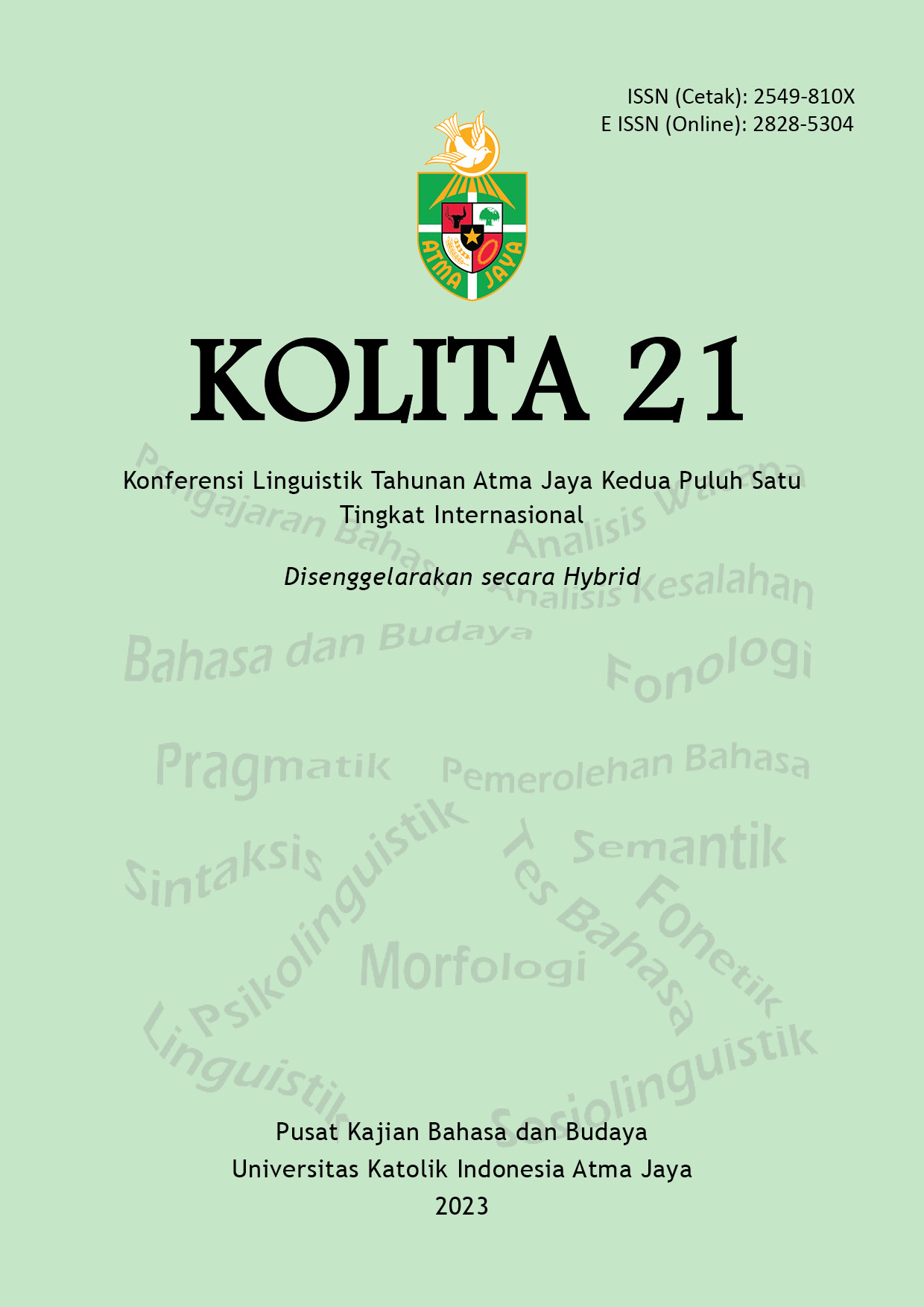ALTERNATIONS OF INDONESIAN SOUNDS IN SAMBAS MALAY
DOI:
https://doi.org/10.25170/kolita.21.4840Keywords:
cognates, sound alternations, momorphophonemic alternation, phonotacticsAbstract
Indonesian is derived from Standard Malay, while Sambas Malay (SM), a language-code spoken by indigenous people mostly living in Sambas Regency, West Kalimantan, becomes one of Malay dialects; and SIL (2006) also explains it becomes one of standard variations of Malay. Therefore, the two language codes are assumed to be derived from the same ancestral language, i.e., Proto-Austronesian language. Consequently, Indonesian and SM share sameness which is shown by identical cognates of the two language codes. There are other cognates which show sound alternations. The sound alternations comprise changes, additions, deletions, and syllabic movements of segments and sound clusters. The data corpora are the phonological forms of the cognates of Indonesian and SM. The phonological forms of SM cognates are obtained from and/or based on a previous study on phonological aspects of SM lexical items conducted by Firman et al. (1998). Meanwhile, Indonesian cognates are Indonesian lexical items which are available in Kamus Besar Bahasa Indonesia (the Main Dictionary of Indonesian) and become the equivalents for SM lexical items afore-mentioned; and the phonological forms of Indonesian cognates are determined by referring to the rules of grapheme-phoneme correspondences in Indonesian proposed by Fauzi (2015). Sound alternations show morphophonemic alternations like consonant weakening, consonant strengthening, lenition, fortition, nasalization, de-nasalization, glottalization, de-glottalization, vowel laxing, vowel tensing, diphthongization, sound deletion, sound addition, gemination or consonant doubling, sound fusion, sound fission, metatheses, assimilation, dissimilation, word lengthening, word shortening, and de-reduplication. Certain findings show certain phonotactics in SM. The result of the discussion also shows the distribution of segments in both of two language codes.





